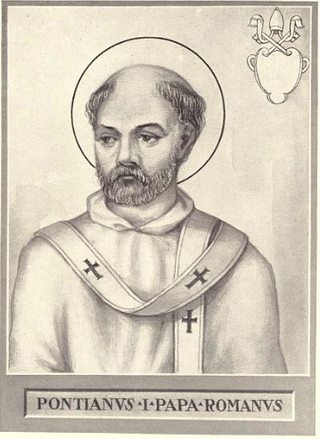The 150s decade ran from January 1, 150, to December 31, 159.
The 190s decade ran from January 1, 190, to December 31, 199.
Year 156 (CLVI) was a leap year starting on Wednesday of the Julian calendar. At the time, it was known as the Year of the Consulship of Silvanus and Augurinus. The denomination 156 for this year has been used since the early medieval period, when the Anno Domini calendar era became the prevalent method in Europe for naming years.
The 330s decade ran from January 1, 330, to December 31, 339.
Year 195 (CXCV) was a common year starting on Wednesday of the Julian calendar. At the time, it was known in Rome as the Year of the Consulship of Scrapula and Clemens. The denomination 195 for this year has been used since the early medieval period, when the Anno Domini calendar era became the prevalent method in Europe for naming years.
Year 217 (CCXVII) was a common year starting on Wednesday of the Julian calendar. At the time, it was known as the Year of the Consulship of Praesens and Extricatus. The denomination 217 for this year has been used since the early medieval period, when the Anno Domini calendar era became the prevalent method in Europe for naming years.

Year 230 (CCXXX) was a common year starting on Friday of the Julian calendar. At the time, it was known as the Year of the Consulship of Agricola and Clementinus. The denomination 230 for this year has been used since the early medieval period, when the Anno Domini calendar era became the prevalent method in Europe for naming years.
Year 168 (CLXVIII) was a leap year starting on Thursday of the Julian calendar. At the time, it was known as the Year of the Consulship of Apronianus and Paullus. The denomination 168 for this year has been used since the early medieval period, when the Anno Domini calendar era became the prevalent method in Europe for naming years.
The 220s decade ran from January 1, 220, to December 31, 229.
The 240s decade ran from January 1, 240, to December 31, 249.

Year 1086 (MLXXXVI) was a common year starting on Thursday of the Julian calendar.

Year 200 (CC) was a leap year starting on Tuesday of the Julian calendar. At the time, it was known as the Year of the Consulship of Severus and Victorinus. The denomination 200 for this year has been used since the early medieval period, when the Anno Domini calendar era became the prevalent method in Europe for naming years.

Year 300 (CCC) was a leap year starting on Monday of the Julian calendar. At the time, it was known as the Year of the Consulship of Constantius and Valerius. The denomination 300 for this year has been used since the early Middle Ages / Medieval period, when the Latin language term / abbreviation "Anno Domini" for the calendar era became the prevalent universal / worldwide method for naming and numbering years. First beginning in Europe at the end of the Roman Empire (after the split of the Western Roman Empire and Eastern Roman Empire in the early Middle Ages / Medieval period.
Year 203 (CCIII) was a common year starting on Saturday of the Julian calendar. At the time, it was known as the Year of the Consulship of Plautianus and Geta. The denomination 203 for this year has been used since the early medieval period, when the Anno Domini calendar era became the prevalent method in Europe for naming years.
Year 232 (CCXXXII) was a leap year starting on Sunday of the Julian calendar. At the time, it was known as the Year of the Consulship of Lupus and Maximus. The denomination 232 for this year has been used since the early medieval period, when the Anno Domini calendar era became the prevalent method in Europe for naming years.
Year 256 (CCLVI) was a leap year starting on Tuesday of the Julian calendar. At the time, it was known as the Year of the Consulship of Claudius and Glabrio. The denomination 256 for this year has been used since the early medieval period, when the Anno Domini calendar era became the prevalent method in Europe for naming years.
Year 259 (CCLIX) was a common year starting on Saturday of the Julian calendar. At the time, it was known as the Year of the Consulship of Aemilianus and Bassus. The denomination 259 for this year has been used since the early medieval period, when the Anno Domini calendar era became the prevalent method in Europe for naming years.
Year 190 (CXC) was a common year starting on Thursday of the Julian calendar. At the time, it was known as the Year of the Consulship of Aurelius and Sura. The denomination 190 for this year has been used since the early medieval period, when the Anno Domini calendar era became the prevalent method in Europe for naming years.
Year 192 (CXCII) was a leap year starting on Saturday of the Julian calendar. At the time, it was known as the Year of the Consulship of Aelius and Pertinax. The denomination 192 for this year has been used since the early medieval period, when the Anno Domini calendar era became the prevalent method for Europeans for naming years.

Year 222 (CCXXII) was a common year starting on Tuesday of the Julian calendar. In the Roman Empire, it was known as the Year of the Consulship of Antoninus and Severus. The denomination 222 for this year has been used since the early medieval period, when the Anno Domini calendar era became the prevalent method in Europe for naming years.





